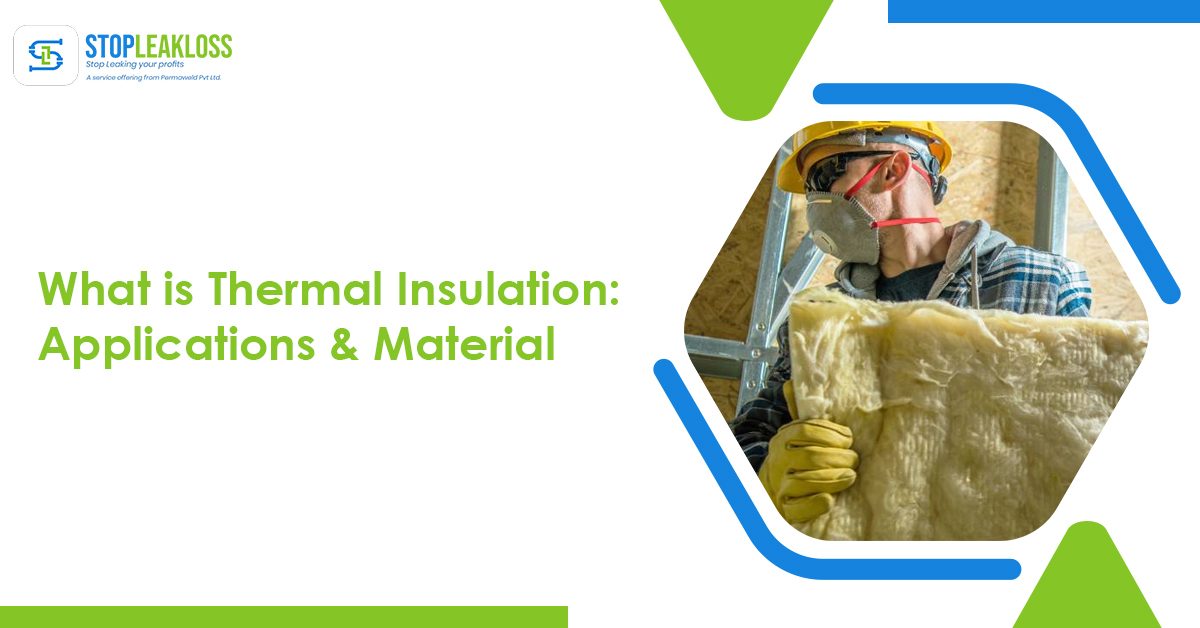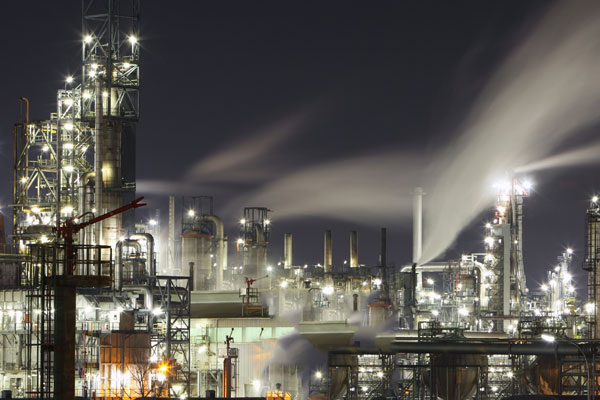
What is Thermal Insulation: Applications & Material
What Is The Concept Of Thermal Insulation?
When two materials come into contact, thermal insulation prevents heat from being transferred. Thermal conductivity is how well a building is insulated from the elements. Thermal insulation is achieved by using low–thermal-conductivity materials. Therefore, insulating materials’ density, heat capacity, and thermal conductivity are important.
Corrosion under insulation often occurs in the petrochemical industry and other heat-insulated pipelines and equipment industries. Corrosion is common on insulating materials beneath pipes and equipment. The insulation of jacket fabrics is also affected.
Application of Thermal Insulation
What does a thermal insulation system accomplish? It is necessary! Is it compulsory to limit heat loss for worker safety, prevent heat gain, minimize surface condensation, give process control, or provide product stability, freeze protection, noise reduction, and fire protection? Each may require different thicknesses, materials, finishes, and insulation levels.
- Heat conservation or limiting heat loss
A thermal insulation system by itself will not be able to keep or maintain the temperature of a system. Insulation is the only way to control, reduce or minimize heat transmission rate across a system. It will, however, be unable to stop it. Insulation reduces heat flow, not prevents it. It’s feasible that condensate and blowdown lines to drains or holding tanks should be insulated to decrease heat loss, although heat loss through valves and flanges is unnecessary (although personnel protection may be required).
- Using Cold Surfaces to Reduce Heat Gain
The major purpose of constructing a thermal insulation system in below-ambient applications is to limit heat absorption while minimizing moisture migration or water input into the system. This kind of moisture migration will have a big impact on insulating performance. Cold systems are more prone to environmental degradation than hot ones because of the direction of the vapor driving force. While water incursion into hot insulation systems can negatively influence performance, it is usually only temporary. On the other hand, water vapor pushes inward, toward the cooler surface, in cold systems.
Water infiltration into the insulation will increase over time. Moisture will gradually degrade the system, finally destroying it. As a result, the entire insulation system design must be comprehensive and well-planned when using vapor resistance and low permeability joint sealants.
- Surface Condensation: Limiting or Controlling
In most cases, thermal insulation techniques can be designed to limit but not “avoid” condensation. It is impossible to design an insulating system that completely eliminates condensation in humid locations. Even the most effective insulation’s required thickness would be financially and practically impossible to achieve in these locations.
The insulation thickness is calculated using the ambient temperature, relative humidity, process operating temperature, and surface emittance. The surface temperature of the insulation system should be kept above the dew point of the surrounding air. This will avert condensation from forming on the insulation’s outside surface, decreasing fire risk and preventing moisture from dripping onto structures or electrical equipment. It’s critical to agree on the appropriate level of time condensation.
- Controlling Noise
Thermal insulation systems can be designed to meet environmental concerns about noise. On the other hand, serious noise complaints should be looked into separately and separately. Sound attenuation is a natural byproduct of the insulating architecture. Because of their sound absorption properties, some insulation and supplementary items give more sound attenuation than others. Mineral fibers are one of the most effective sound-absorbing thermal insulation materials available.
The material chosen to wrap the insulation can impact sound attenuation. A fabric-reinforced mastic layer above insulation provides less sound absorption than metal jacketing. Metal jacketing with a loaded mass is available to reduce noise.
- Overall, fire protection materials in thermal insulation systems are better suited for insulation than fire prevention. However, the American Petroleum Institute (API) does acknowledge that in some cases, insulating materials may provide “credit” in the design and size of pressure relief valves. API Recommended Practice 521 establishes criteria for insulation systems. According to the regulations, the final insulating system must not be dislodged when exposed to the fire-water stream used for firefighting, whether by hand lines or monitor nozzles. Metal-jacketed firefighting insulation systems with stainless steel jackets and bands meet these requirements in most cases.
There are many industrial insulating materials to choose from, perhaps too many to list here. Instead, we’ll go through some of the most common types and types of industrial insulation. As an example, consider the following:
Silicate of calcium
Calcium silicate insulation is a strong, stiff material that can endure temperatures up to 1,200°F. This has long been the industry standard in high-temperature applications. It has high compressive strength and is noncombustible.
Cellular Glass
Cellular glass insulation is a strong, thick material at temperatures of minus 450 to 400 degrees Fahrenheit. Its closed-cell form makes it appropriate for low-temperature applications and those in which fluid absorption into the insulation is a concern.
Polyisocyanurate Foam
At 200 to 300 degrees Fahrenheit, polyisocyanurate foam insulation is used. It is 90 percent cell-to-cell and has good thermal properties. Because of its contraction qualities, it requires extra layering in cold service applications.
Fiberglass and Mineral Wool
Insulation materials such as fiberglass and mineral wool are two distinct types. However, they share many of the same applications and physical characteristics. As a result, these items are rarely used in contexts where mechanical or physical abuse is possible. It’s also worth noting that certain of their physical and auditory characteristics may be affected when used at high temperatures.
Perlite
Perlite and calcium silicate insulation are frequently used in the same applications. However, it is less dense than calcium silicate and has a lower compressive strength. It’s also been treated with a water-repellent coating to prevent moisture from accumulating in the air during storage and installation.
Materials to Augment | Thermal insulation
Insulation accessories are equally as important as insulation. As a result, if improper accessory material is used, the system will not function properly.
Other typical additional materials include acrylic latex mastic, aluminum jacketing, stainless steel jacketing, stainless steel bands and screws, Hypalon mastic, and electrometric joint sealers.



